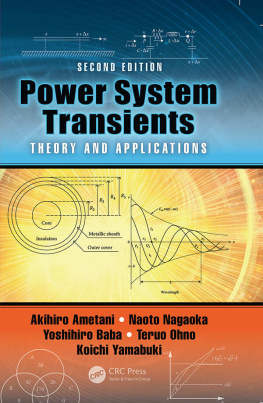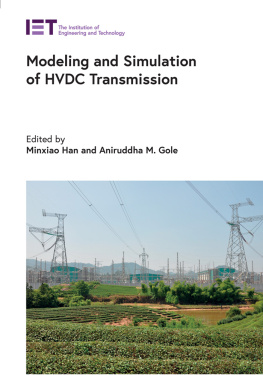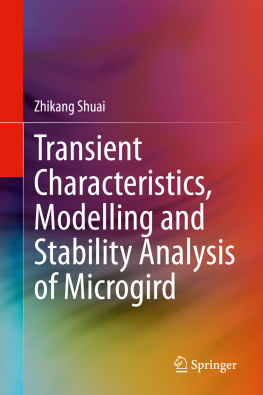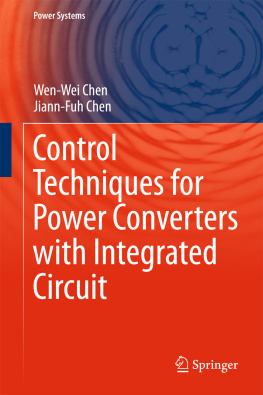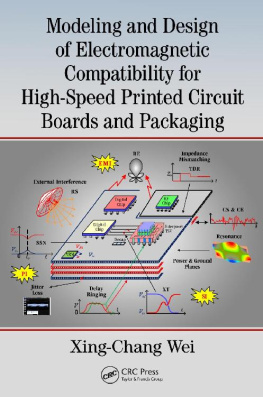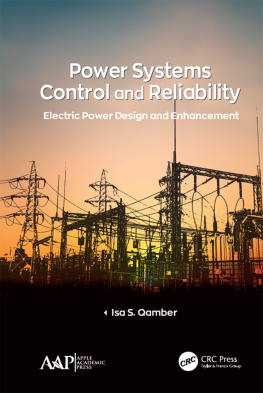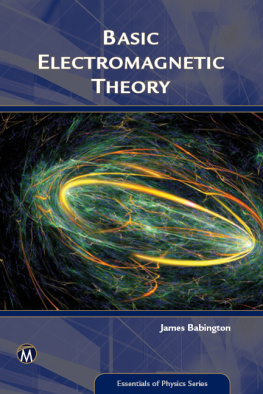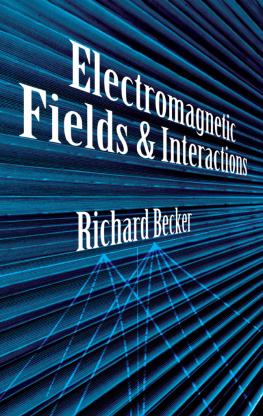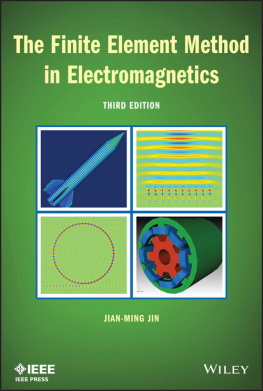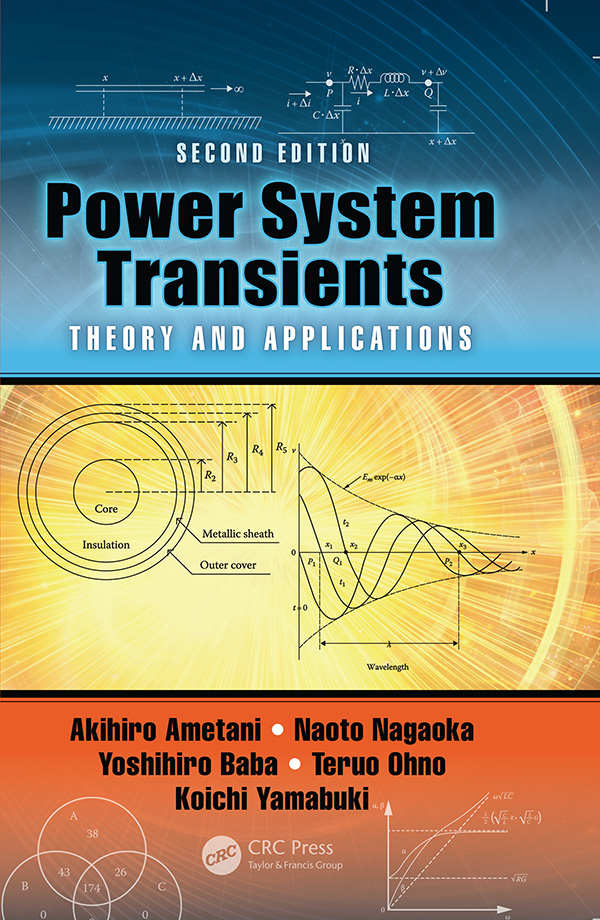
Power System
Transients
THEORY AND APPLICATIONS
Power System
Transients
THEORY AND APPLICATIONS
Akihiro Ametani Naoto Nagaoka
Yoshihiro Baba Teruo Ohno
Koichi Yamabuki
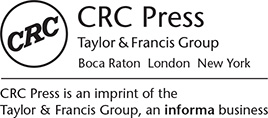
MATLAB is a trademark of The MathWorks, Inc. and is used with permission. The MathWorks does not warrant the accuracy of the text or exercises in this book. This books use or discussion of MATLAB software or related products does not constitute endorsement or sponsorship by The MathWorks of a particular pedagogical approach or particular use of the MATLAB software.
CRC Press
Taylor & Francis Group
6000 Broken Sound Parkway NW, Suite 300
Boca Raton, FL 33487-2742
2017 by Taylor & Francis Group, LLC
CRC Press is an imprint of Taylor & Francis Group, an Informa business
No claim to original U.S. Government works
Printed on acid-free paper
Version Date: 20161019
International Standard Book Number-13: 978-1-4987-8237-1 (Hardback)
This book contains information obtained from authentic and highly regarded sources. Reasonable efforts have been made to publish reliable data and information, but the author and publisher cannot assume responsibility for the validity of all materials or the consequences of their use. The authors and publishers have attempted to trace the copyright holders of all material reproduced in this publication and apologize to copyright holders if permission to publish in this form has not been obtained. If any copyright material has not been acknowledged please write and let us know so we may rectify in any future reprint.
Except as permitted under U.S. Copyright Law, no part of this book may be reprinted, reproduced, transmitted, or utilized in any form by any electronic, mechanical, or other means, now known or hereafter invented, including photocopying, microfilming, and recording, or in any information storage or retrieval system, without written permission from the publishers.
For permission to photocopy or use material electronically from this work, please access www.copyright.com (http://www.copyright.com/) or contact the Copyright Clearance Center, Inc. (CCC), 222 Rosewood Drive, Danvers, MA 01923, 978-750-8400. CCC is a not-for-profit organization that provides licenses and registration for a variety of users. For organizations that have been granted a photocopy license by the CCC, a separate system of payment has been arranged.
Trademark Notice: Product or corporate names may be trademarks or registered trademarks, and are used only for identification and explanation without intent to infringe.
Visit the Taylor & Francis Web site at
http://www.taylorandfrancis.com
and the CRC Press Web site at
http://www.crcpress.com
Contents
When lightning strikes a building or transmission tower, a lightning current flows into its structures, which are made of electrically conducting materials, such as steel and copper. The lightning current produces a high voltage called overvoltage (or abnormal voltage) that can damage or break electrical equipment installed in the building or the power transmission system. The breakdown of equipment may shut down the electrical room of the building, resulting in a complete blackout. If the breakdown occurs in a substation within a high-voltage power transmission system, a city that receives its electricity from the substation can also experience a blackout.
An overvoltage can also be generated by switching operations of a circuit breaker or a load switch, both of which are electrically identical to breakers found in the homes of customers.
A period in which a short-lived overvoltage appears due to lighting and switching operation is called a transient, while an equilibrium condition of electricity being supplied is called a steady state. In general, a transient dies out and reaches a steady state within approximately 10 s (106 s) in the lighting transient case and within approximately 10 ms (103 s) in the switching transient case. Occasionally, a transient sustains itself for a few seconds if it involves the resonant oscillation of circuit parameters (mostly inductance and capacitance) or mechanical oscillation of the steel shaft of a generator (called subsynchronous resonance).
A transient analysis is a crucial subject for electrical engineers and researchers, especially in the field of electric power engineering when determining the strength of equipment in order to maintain safety.
First, this book will illustrate a transient on a single-phase line from a physical viewpoint, and how it can be solved analytically by an electric circuit theory. The impedance and admittance formulas of an overhead line will also be described. Approximate formulas that can be computed using a pocket calculator will be explained to show that a transient can be analytically evaluated via hand calculation. Since a real power line contains three phases, a theory to deal with a multiphase line will be developed. Finally, the book describes how to tackle a real transient in a power system. A computer simulation tool is necessary for thisspecifically the well-known simulation tool ElectroMagnetic Transients Program (EMTP), originally developed by the U.S. Department of Energy, Bonneville Power Administrationwhich is briefly explained in .
In , wave propagation characteristics and transients in an overhead transmission line are described. The distributed parameter circuit theory is applied to solve the transients analytically. The EMTP is then applied to calculate the transients in a power system composed of the overhead line and a substation. Various simulation examples are demonstrated, together with the comparison of field test results.
examines the transients in a cable system. A cable system is, in general, more complicated than an overhead line system, because one phase of the cable is composed of two conductors called a metallic core and a metallic sheath. The former carries a current and the latter behaves as an electromagnetic shield against the core current. Another reason why a cable system is complicated is that most long cables are cross-bounded, that is, the metallic sheaths on phases a, b, and c in one cable section are connected to that of phases b, c, and a in the next section. Each section is called a minor section and the length of each normally ranges from some 100 m to 1 km. Three minor sections comprise one major section. The sheath impedances of three phases thus become nearly equal to each other. As a result, a transient on a cable system is quite different from that on an overhead line system.
As in , a basic characteristic of wave propagation on a cable is explained analytically based on the distributed parameter circuit theory, along with EMTP simulation examples.
Two of the most attractive subjects in recent years are the so-called clean energy (or sustainable energy) and smart grids; as a result, wind farms and mega solar energy plants have become well-known. In , voltage regulation on equipment in a DC railway is described when a Li-ion battery is adopted, since the Li-ion battery is expected to be a storage element of the PV and wind farm generation systems.
In , a transient analysis/simulation is based on a circuit theory derived by the TEM mode of wave propagation. When a transient involves non-TEM mode propagation, a circuit-theory-based approach cannot give an accurate solution. A typical example is the arcing horn flashover considering the mutual coupling between power lines and tower arms, a transient in a grounding electrode, and an induced voltage from a lightning channel.
Next page
